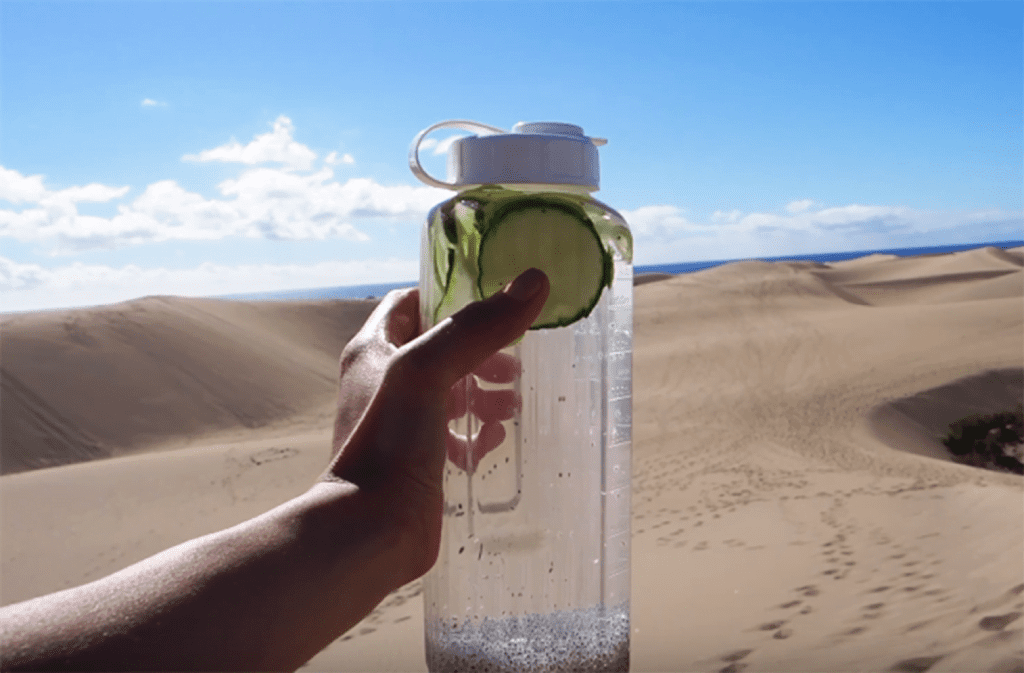As exciting as it sounds to go out and play on the beach, it might also turn out to be the worst idea without proper precautions in this heat. What started as a summer vacation might quickly turn into a hospital run! With global warming on the rise and the past 5 years declared as the warmest years collectively by NASA, let’s brace ourselves and avoid getting heat stroked.

Heatstroke isn’t just falling unconscious and awakening once the body cools down. It can quickly progress to coma and death without medical attention. It’s a real medical emergency.

WHAT CAUSES HEATSTROKE, HOW?
Your body usually has some inbuilt ways to cool itself down when the temperature spikes – you begin sweating. The water from the sweat evaporates and takes the heat away from your skin surface. The air around you helps with this too, your body loses its heat to cool air. This process works well for you as long as the sweat and air manage to evaporate and transfer heat away from your body, respectively.
Under extreme conditions, a maximum of about 3 liters of sweat can be produced each hour!
So when these cooling processes fail or disrupt they lead to heatstroke which is often preceded by heat exhaustion.
In places with high humidity (high moisture content in air) the sweat fails to evaporate, leaving your body all sticky and hot. In response, the body begins to pump more blood and divert more water onto the skin surface in order to cool your body down. But the failure to evaporate sweat only causes loss of water and essential electrolytes from your body instead of bringing the shell (skin surface) temperature down.

SIGNS AND SYMPTOMS TO WATCH OUT FOR
you’re probably about to have a heat stroke if you are experiencing any of the below mention symptoms. however it’s essential to differentiate heat exhaustion from heatstroke.
- Fatigue & lethargy
- Confusion & headache.
- your body stops sweating but is hot.
- Nausea & vomiting
- Giddiness
There are good chances that a person may experience one or none of them before falling unconscious or start seizing due to heatstroke. Nevertheless, seek immediate medical attention.

THE RISK FACTORS AND HOW TO ELIMINATE THEM
The key is to first remove yourself or get rid of these risk factors because prevention is better than cure ALWAYS!
1. PHYSICAL EXERTION:
:Intense Physical activity in the direct sun can be debilitating. Not only is your body under physical stress from the strenuous activity but also struggling to keep itself cool.
- Refrain from it if avoidable, otherwise, make sure to take constant breaks every 20-30min SEEKING shaded and cool place/ air-conditioned place.
- The workload on the body should have a gradual increase rather than a steady high intensity.

2. DEHYDRATION:
As mentioned above, your body loses lots of water during the heat stroke. Under dehydration, your body fails to sweat fast enough to cool itself down and so the condition quickly escalates to shock, coma and even death. Children and the elderly are especially vulnerable! Therefore –
- Drink water EVERY 15 MIN and drink even BEFORE you are thirsty.
- Stay HYDRATED! Your body needs about 450ml per hour under extreme circumstances. To keep things interesting you can make water look more attractive! Think Rasna, Rooafza or you can add chia seeds, mint leaves or cucumber slices since they give added nourishment.

- AVOID beverages that dehydrate you- caffeine, tea, alcohol.
Always have electrolyte (ORS) sachets handy. Mix them with water and have them when you experience symptoms of heat stroke or heat exhaustion. You can make ORS at home a carry it with you. Here’s the recipe for 1 liter of ORS:
In a liter of drinking water mix: –
- Sugar – Six level teaspoons.
- Salt – Half level teaspoon.
Stir the mixture till the sugar dissolves.
3. HUMIDITY AND SUN EXPOSURE
Humidity is counterproductive for sweating. Therefore, when it’s hot and humid outside make sure you take these precautions: –
- Use prickly heat TALCUM POWDERS and spread ample amount all over your body and especially where you seem to sweat a lot. This will help you keep your skin dry under humid conditions.
- DO NOT clog your skin pores with heavyweight creams and lotions they may not allow your body to sweat freely and interfere with sweat evaporation.
- Wear light-colored, lightweight and cotton clothes they not only help dissipate heat and let air flow onto your body but also absorb moisture from your skin. Make sure your undergarments aren’t too tight.
- Always carry an umbrella to keep yourself in the shade, if not umbrella wear hats with a minimum of 3-inch rims.
- Using wet wipes aren’t advisable under humid conditions, use dry soft face tissues instead!
The goal is to keep your skin dry and airy.
TIPS TO COOL YOUR BODY DOWN
After having spent time in “heatstroke-y” environment your body will thank you if you actively try to cool it down! Here’s how:
- ICE BATH! You’d be crazy if you didn’t want to jump into a tub of ice after a long day in sun. But unfortunately not all of us have bath tubs at home so the best alternative would be to take a cold shower and let your body air dry instead of towel dry. You can fill a bucket with cold water, add ample ice cubes, dip your feet in them and RELAX! Your body has completely fallen in love with you at this point.
- Use ice packs to place onto our body. Place them strategically at places where there’s more heat dissipation and pulse -like your neck. For a person experiencing heatstroke ice packs are to be places at neck armpits, groin.

- The faster the AIR FLOW around you, the faster your body cools down. So notch up that fan speed.
- Last but not least – PUT YOUR PHONE AWAY from your body. Radiation can heat up your body as it can cool it down. Your body loses heat by radiating more infrared waves than it absorbs from cooler objects and vice versa.








